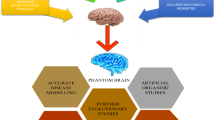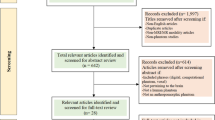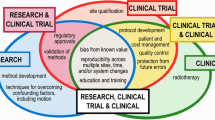
Overview
- Describes computational human body phantom construction and application
- Explains new practices in computational human body modeling for electromagnetic safety and exposure evaluations
- Includes a survey of modern applications for which computational human phantoms are critical
Buy print copy
Tax calculation will be finalised at checkout
About this book
This open access book describes modern applications of computational human modeling in an effort to advance neurology, cancer treatment, and radio-frequency studies including regulatory, safety, and wireless communication fields. Readers working on any application that may expose human subjects to electromagnetic radiation will benefit from this book’s coverage of the latest models and techniques available to assess a given technology’s safety and efficacy in a timely and efficient manner.
- Describes computational human body phantom construction and application;
- Explains new practices in computational human body modeling for electromagnetic safety and exposure evaluations;
- Includes a survey of modern applications for which computational human phantoms are critical.
Similar content being viewed by others
Keywords
Table of contents (24 chapters)
-
Front Matter
-
Tumor Treating Fields
-
Front Matter
-
-
Non-invasive Neurostimulation – Brain
-
Front Matter
-
-
Non-invasive Neurostimulation – Spinal Cord and Peripheral Nervous System
-
Front Matter
-
-
Modeling of Neurophysiological Recordings
-
Front Matter
-
Editors and Affiliations
About the editors
Sergey Makarov is a full professor of Electrical and Computer Engineering at Worcester Polytechnic Institute, having taught a wide variety of graduate and undergraduate classes and established a very active record of academic and research advising. His formal educational background is in applied mathematics and electromagnetics but since moving to WPI in 1998, his research field has been shifted to analysis and design with virtual human models including image segmentation, surface extraction, and CAD model generation. Dr. Makarov has published about 150 conference and journal papers, three books, and he holds active 6 patents with four other pending. He has received numerous departmental and institute-wide awards for his teaching, advising, and service and is a Senior Member of the IEEE, participating in or chairing committees related to electromagnetic safety and education. In 2009, Dr. Makarov founded NEVA Electromagnetics, LLC, serving customers in need of multi-tissue virtual human models generated from biomedical image datasets for electromagnetic and mechanical simulation studies, body-worn antenna designs, and biomedical sensor designs for many applications. Dr. Makarov is also a member of the Research Staff at the Athinoula A. Martinos Center for Biomedical Imaging at Massachusetts General Hospital, conducting investigative studies in non-invasive brain stimulation technologies that utilize many of his computational human phantoms.
Gregory Noetscher is a senior research electrical engineer with the US Army at the Natick Soldier Research, Development and Engineering Center in Natick, MA, having worked on and coordinated a variety of experimental and simulation projects related to precision guided cargo airdrop since 2003. His research interests since 2009 have also included the construction and application of highly non-homogeneous human body phantoms. Dr. Noetscher also serves as a Research Scientist at Worcester Polytechnic Institute, participating and directing research on human phantom creation and application. He is a member of the IEEE and has published over 50 conference and journal articles, one textbook, and holds two active patents with three pending.
Bibliographic Information
Book Title: Brain and Human Body Modeling 2020
Book Subtitle: Computational Human Models Presented at EMBC 2019 and the BRAIN Initiative® 2019 Meeting
Editors: Sergey N. Makarov, Gregory M. Noetscher, Aapo Nummenmaa
DOI: https://doi.org/10.1007/978-3-030-45623-8
Publisher: Springer Cham
eBook Packages: Biomedical and Life Sciences, Biomedical and Life Sciences (R0)
Copyright Information: The Editor(s) (if applicable) and The Author(s) 2021
Hardcover ISBN: 978-3-030-45622-1Published: 06 August 2020
Softcover ISBN: 978-3-030-45625-2Published: 11 September 2020
eBook ISBN: 978-3-030-45623-8Published: 05 August 2020
Edition Number: 1
Number of Pages: XI, 407
Number of Illustrations: 24 b/w illustrations, 199 illustrations in colour
Topics: Biomedical Engineering and Bioengineering, Biomedical Engineering/Biotechnology, Circuits and Systems



